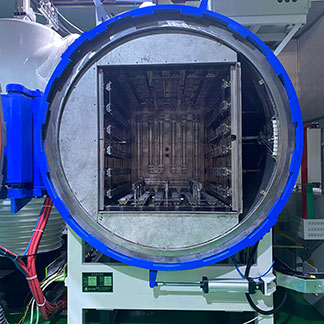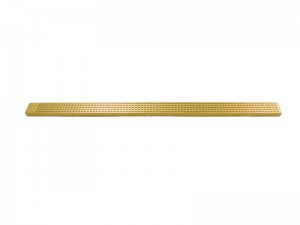Vacuum brazing technology is a method of joining two or more metal parts together by heating them to high temperatures and in a vacuum environment. The following is a detailed introduction to vacuum brazing technology:

Vacuum Brazing Furnace
1. Principle:
Vacuum brazing uses thermal energy to heat the solder to its melting point and coats it on the surface of the metal parts to be connected. In a vacuum environment, the heated solder melts and penetrates the contact surfaces of the metal parts. As the temperature decreases, the solder solidifies and forms a strong connection. The vacuum environment helps reduce the presence of oxygen and other impurities, thus providing better brazing quality.
2. Equipment and processes:
Vacuum brazing usually requires the use of a vacuum furnace or vacuum brazing equipment to provide the appropriate heating and vacuum environment. Vacuum furnaces typically have components such as heating elements, vacuum chambers, vacuum pumps, and temperature control systems. When performing vacuum brazing, the metal parts are first cleaned and prepared, then coated with brazing filler metal. Next, the parts are placed in a vacuum furnace and heated so that the solder melts and penetrates the contact surfaces. Finally, the temperature is lowered, the solder solidifies and the connection is formed.
3. Solder:
In vacuum brazing, choosing the right filler metal is crucial to getting a good connection. The choice of solder depends on factors such as the metal materials to be joined, application requirements and operating temperature. Common solders include silver-based, gold-based, copper-based, nickel-based and other alloys. Solder is usually used in the form of powder, ribbon or coating.
4. Application areas:
Vacuum brazing technology is widely used in many fields. It is commonly used in aerospace, electronic equipment, optical devices, vacuum tubes, sensors, medical equipment and energy fields. Vacuum brazing enables high-strength, high-tightness and high-reliability connections at high temperatures and very low pressures, making it suitable for applications requiring high-quality connections.
5. Advantages
Vacuum brazing technology has the following advantages:
- High-Strength Connection: Vacuum brazing enables strong metal connections with high strength and sealing.
- Low temperature processing: Vacuum brazing is typically performed at lower temperatures than other welding methods, reducing the risk of material deformation and heat-affected zones.
- Good connection quality: The vacuum environment helps reduce the presence of oxygen and other impurities, providing better brazing quality.
Generally speaking, vacuum brazing technology is a high-strength connection method that joins metal parts together in a vacuum environment. It is widely used in many industrial fields, providing reliable connections and excellent connection quality.
Vacuum Welding Product Display:
Post time: Dec-13-2023










